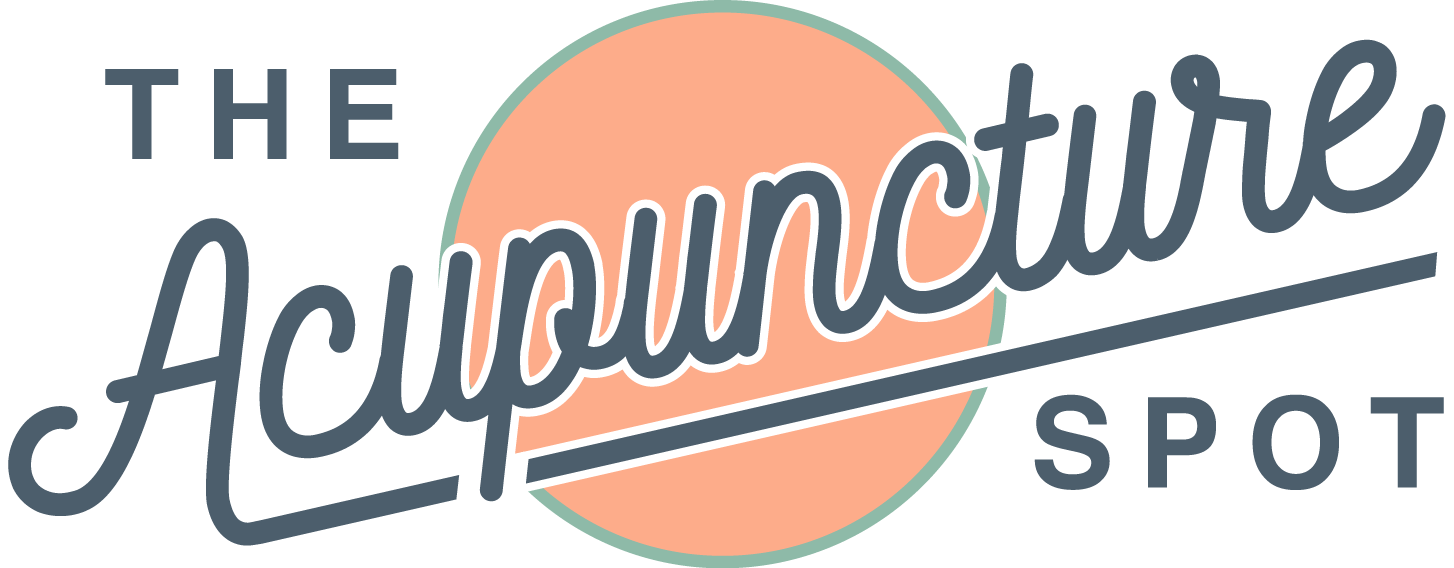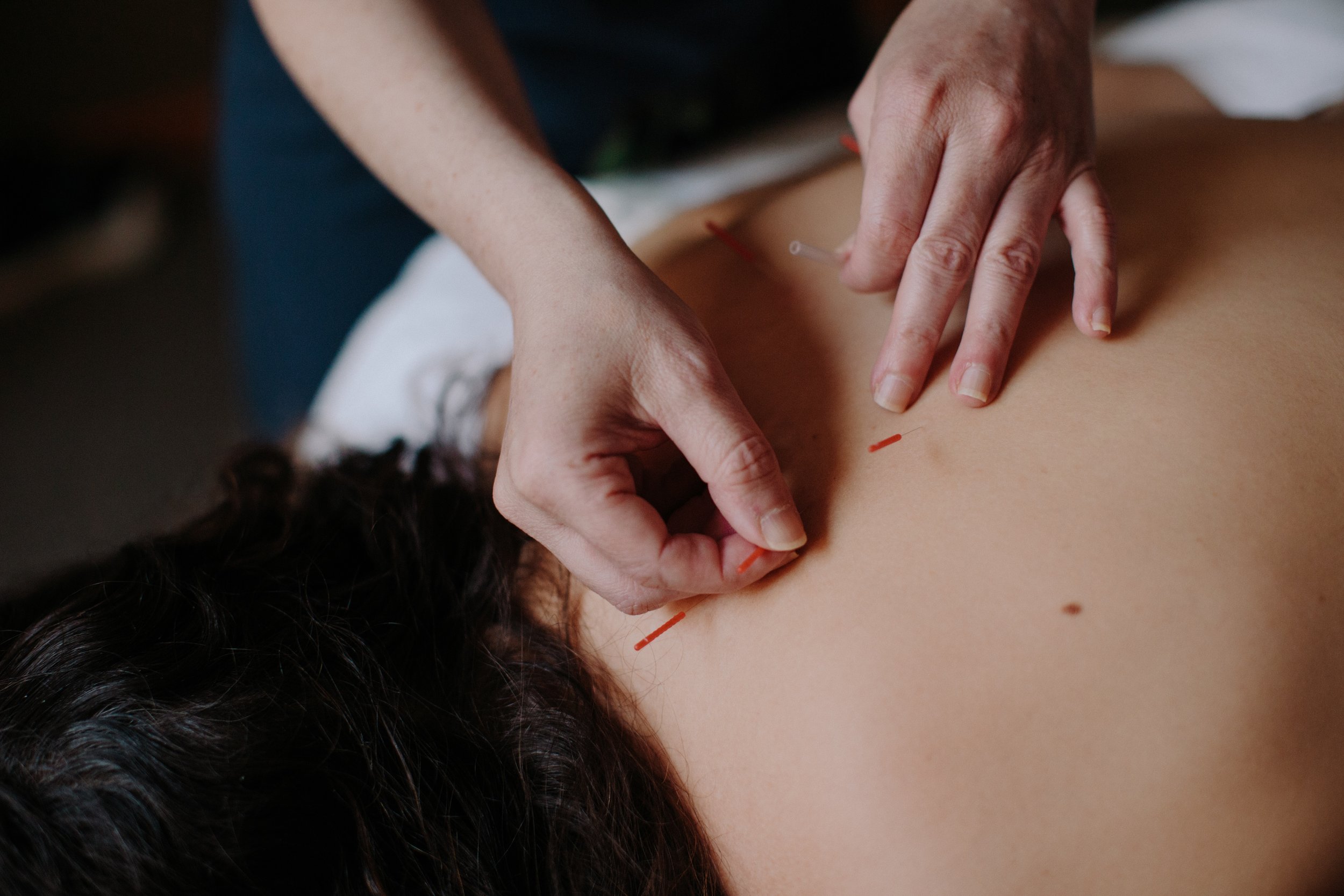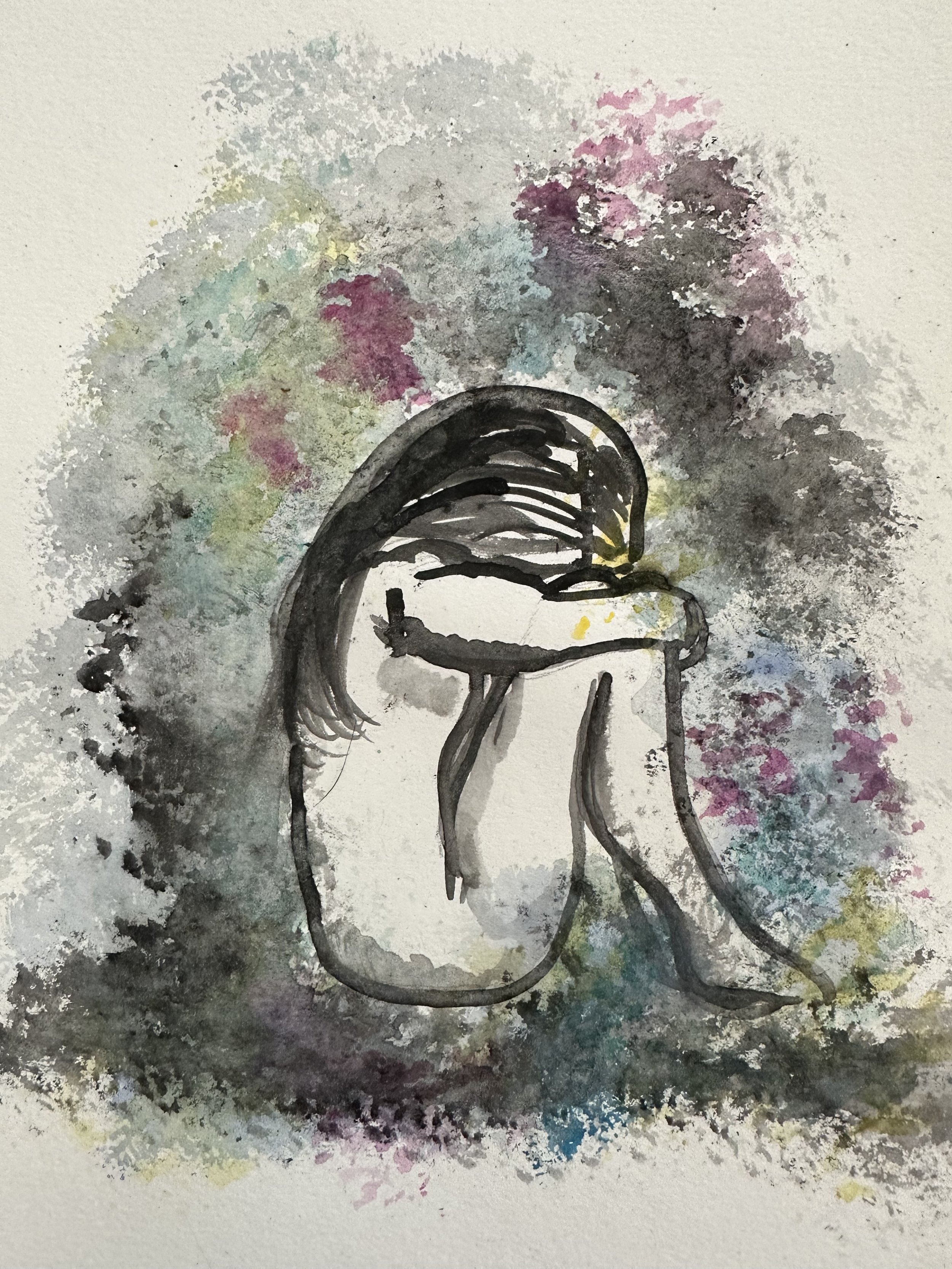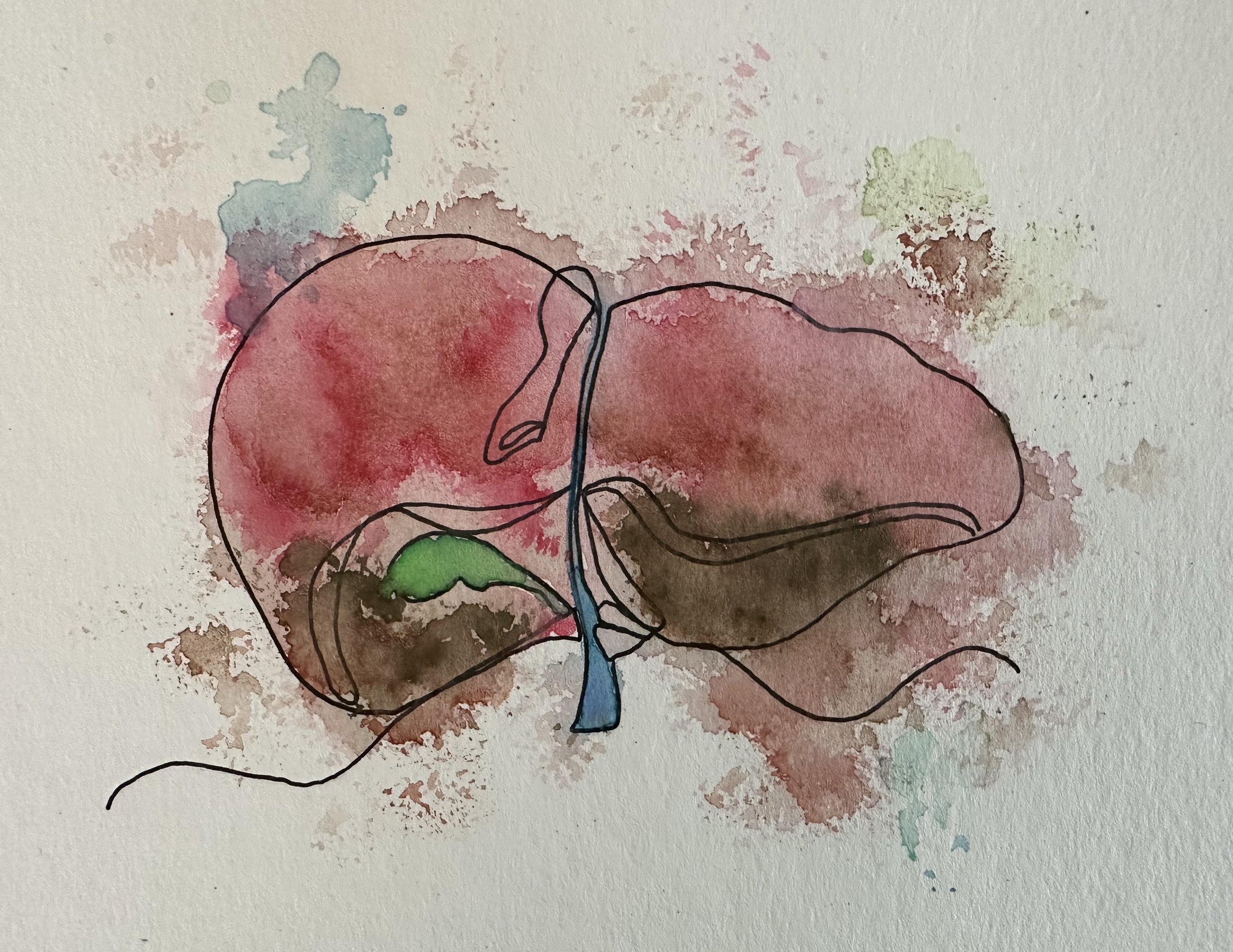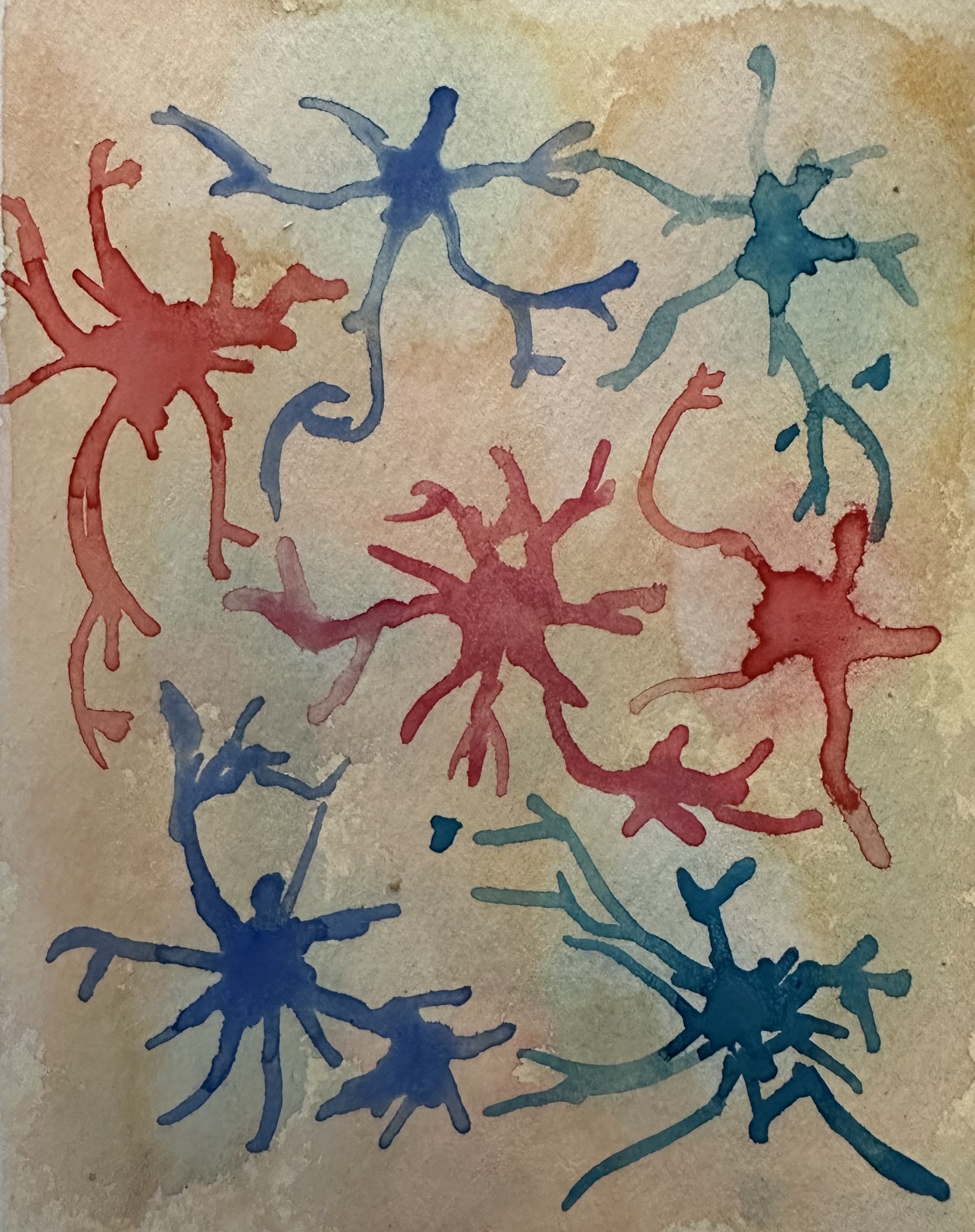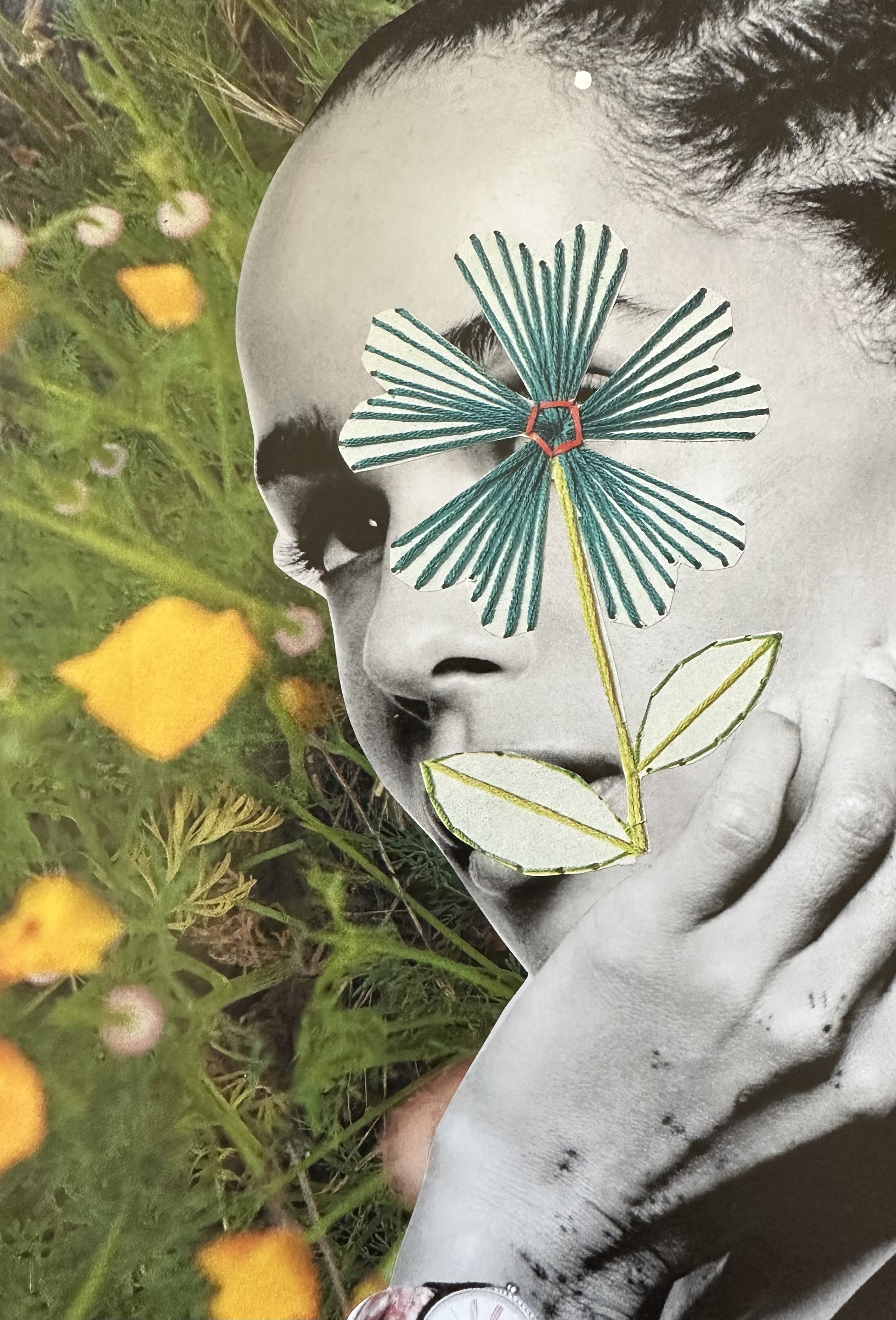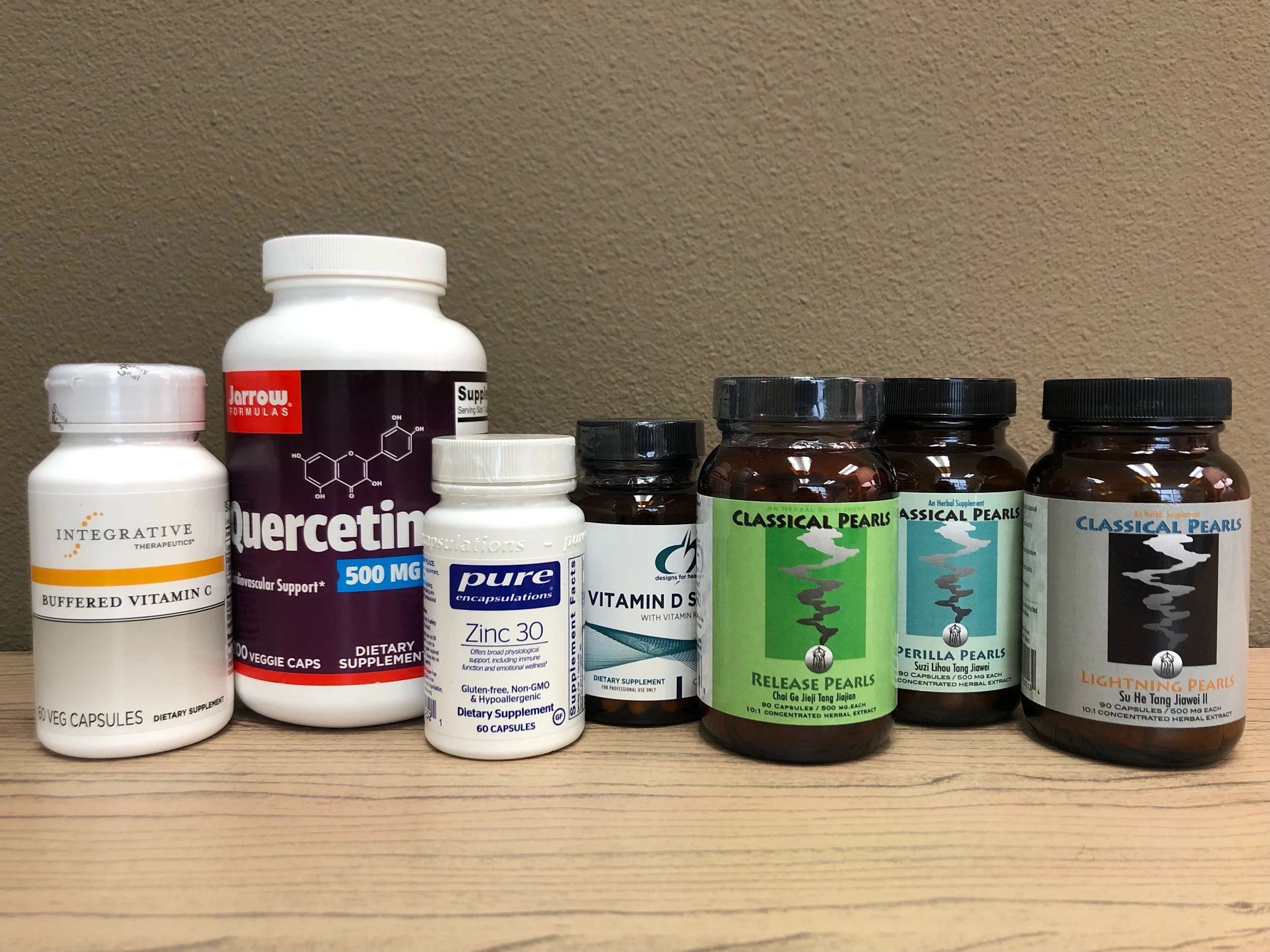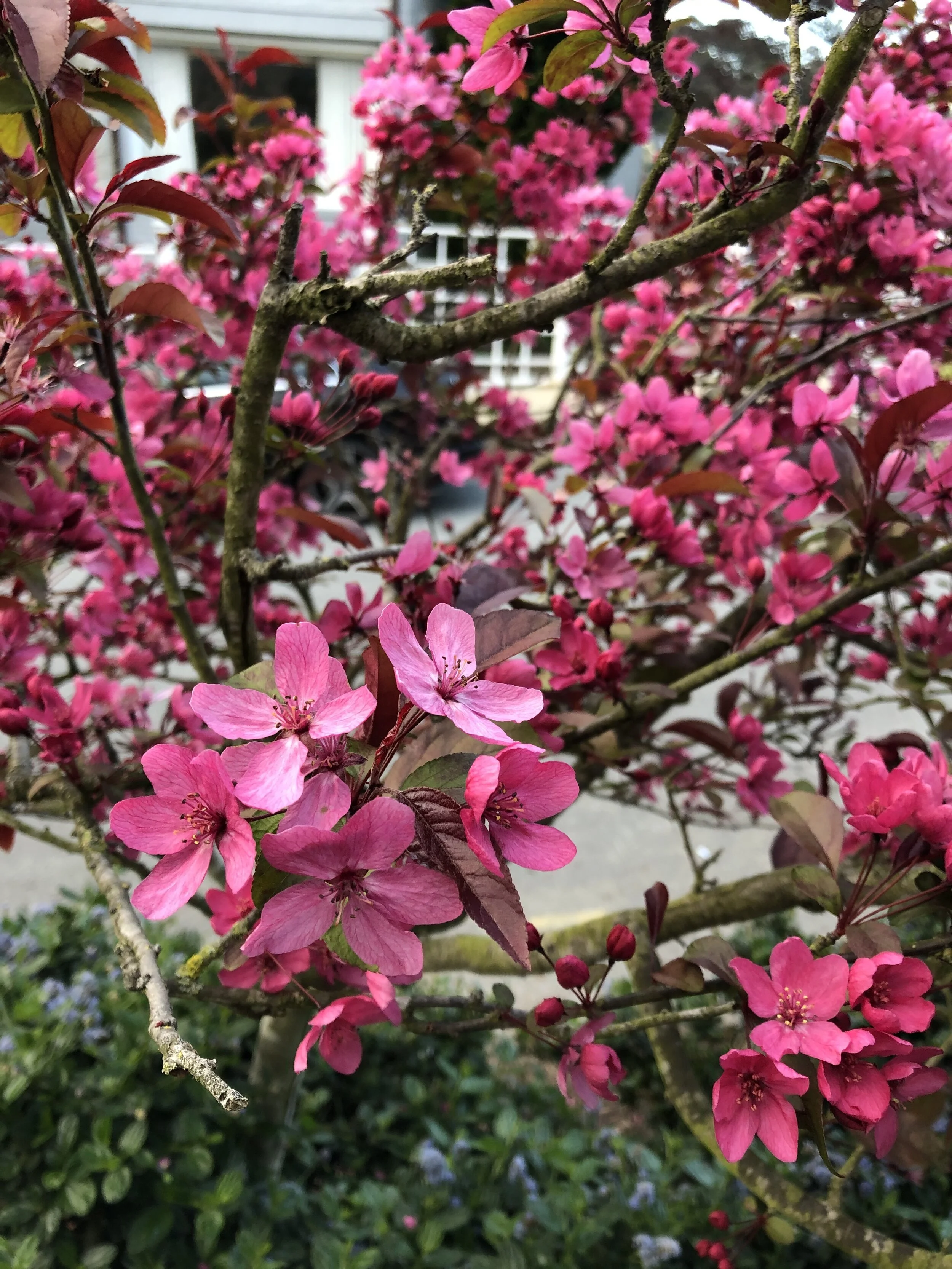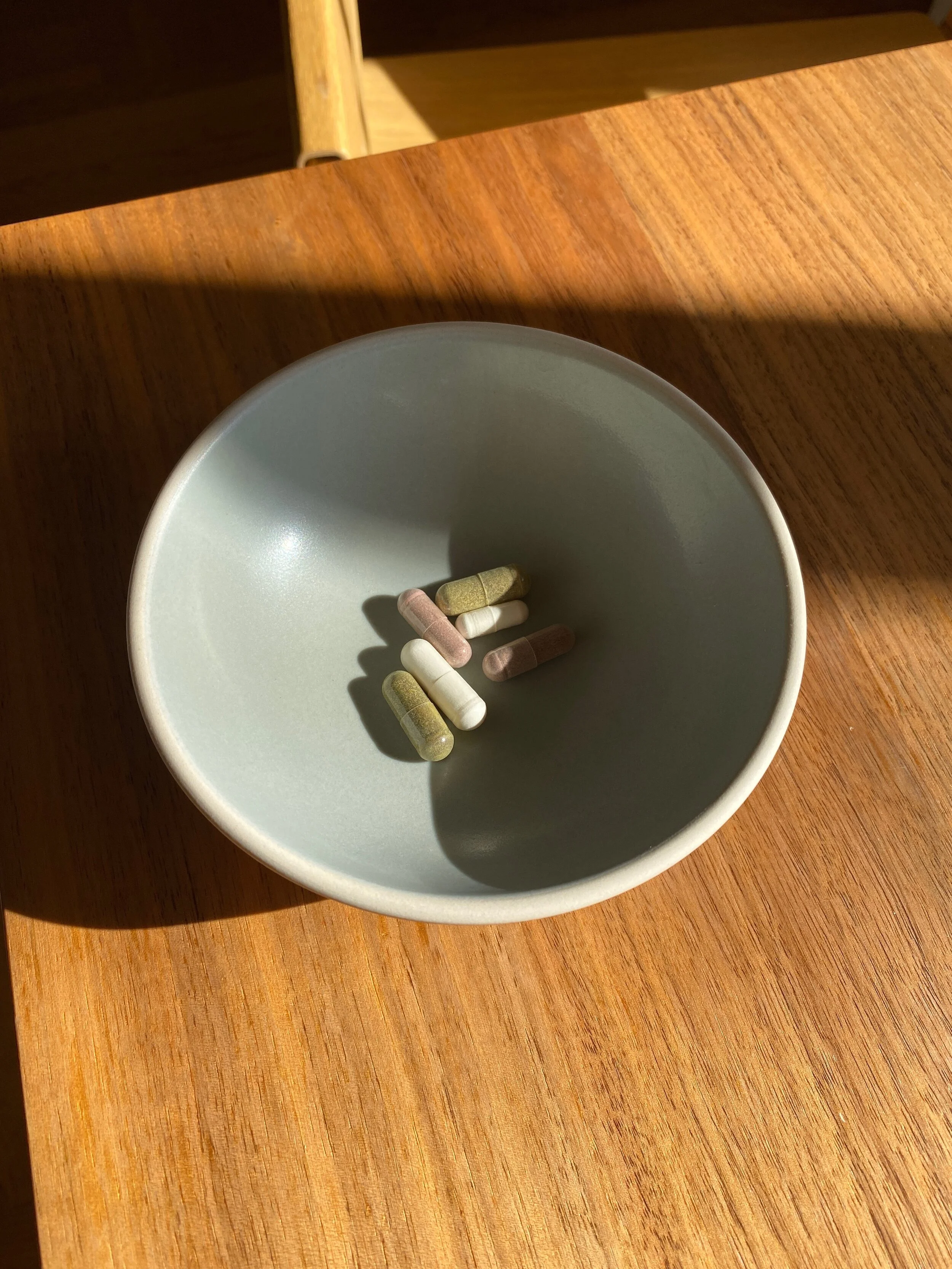Together, we retraced our steps along the journey of unraveling what defines mystery illnesses – as complex and multifaceted as the process of putting oneself together anew. So, just as I laid out the steps that got us to where we are (in my last blog post here), now I’ll present all of the pieces that align to support us in feeling better, whatever level of which is possible for each of us. Again, these all take privilege, patience, and time. Often you have to do what you can, given your specific circumstances and situation, and you can’t do it all at once. I am very much still learning about new ways I can support my health and healing that I either didn’t have the capacity to incorporate before, or scoffed at when first mentioned.
Let’s start with a bird’s eye view of mystery illness, before getting into my recommendations about how to start healing. The following excerpts are very helpful in tracing the threads to the root cause(s), as written by Sarah Ramey in her book The Lady’s Handbook for Her Mysterious Illness:
“We just have to keep in mind the bigger picture. When we look at the things that are working, from dietary changes to neural retraining to low-dose naltrexone to larazotide, these things always revolve around the same principles:
Fixing dysbiosis and leaky gut.
Correcting nutrient deficiencies.
Retraining a hyperreactive brain, stuck in fight or flight.
Lightening the toxic load.
Treating infections.
Regulating stress, metabolism, and sex hormones.
Calming inflammation, histamine issues, and microglial inflammation.
Supporting the mitochondria, and supporting the methylation pathways.
And it is just not possible to address all of that for this hugely diverse patient population with one miracle drug or surgery.
A wide battery of things got us here in the first place, and so while we all support radically increased research and funding for the drugs that will help us get better, faster, I believe we need to protect ourselves from the temptation of believing that one intervention is going to press reset and put things back to normal, for all of us, forever.”
To expand on the above list, Ramey’s book gives us more depth here, in the words of functional medicine practitioner Chris Kresser:
“1. Gut dysfunction. Includes small intestine bacterial overgrowth (SIBO), infections (e.g., parasites, pathogenic bacteria, viruses, candida), low stomach acid, bile, and enzyme production, intestinal permeability, and food intolerances.
2. Nutrient imbalance. Includes deficiency of nutrients like Vitamin B12, iron, folate, magnesium, zine, EPA/DHA and fat-soluble vitamins (most common), and excess of nutrients like iron (less common).
3. HPA axis dysregulation. Includes regulating the communication between the hypothalamus, pituitary, and adrenal glands, and balancing the production of hormones associated with those glands (e.g., DHEA, cortisol).
4. Toxic burden. Includes exposure to chemicals (e.g., BPA, phthalates, etc.), heavy metals (e.g., mercury, arsenic), biotoxins (e.g., mold/mycotoxins, inflammation), or impaired detoxification capacity due to nutrient deficiencies, GI issues or other causes.
5. Chronic infections. Includes “stealth” infections by tick-borne organisms (e.g. Borrelia, Babes, Bartonella, Ehrlichia), intracellular bacteria (e.g., Mycoplasms, Chlamydophilia), viruses (e.g. HHV-6, HPV), and dental bacteria.
6. Hormone imbalance. Includes hormones associated with metabolism (e.g., insulin, leptin), thyroid, and gonads (e.g., estrogen, progesterone, testosterone).
7. Immune dysregulation. Includes autoimmunity, underachieving immune function, and chronic systemic inflammation.
8. Cellular dysfunction. Impaired methylation, energy production, and mitochondrial function, and oxidative damage.
I’ve mentioned it’s complicated?”
This is an overwhelming but wonderfully thorough overview that Sarah Ramey and Chris Kresser give us. If you’re feeling overwhelmed, I’m with you. I 100% agree with everything Ramey is saying, and sadly a lot of this can only be fully addressed by expensive testing and support from a functional medicine doctor. However, not all hope is lost; there are many ways to start addressing these issues on your own.
My intention is to impart some practical tips and resources so you can be inspired about where to begin. This is a place that doesn’t necessarily rely on high-priced practitioners and fancy testing, but where you can begin on your own. These mystery health conditions contain a weird mix of the ultra-complex and essential, as so much relief can be won from always coming back to the basics. However, part of the complexity is that there are a lot of basics that can, additionally, feel quite incompatible with the modern demands with which we are expected to keep up.
After years of working on healing from mystery illness personally, and especially after the low lows of the past couple of years, I feel confident in saying that there are physical, emotional, and even spiritual components to this healing journey. So, in no particular order, here is my list of top 10 insights regarding how I address my mysterious complex health issues on all three levels:
The basics are essential, even though they’re not enough: sleep, hydration, diet, and – if possible – movement.
Find a care team that cares. Depending on your financial situation and privilege, this may or may not be possible. At the very least, try to find a primary care doctor that is compassionate and believes you even if they don’t have most of the tools to help you. My current healthcare team is comprised of a functional medicine doctor, acupuncturist, chiropractor, naturopath for homeopathic support, therapist doing somatic work, osteopath and craniosacral practitioner, psychologist for neurofeedback, and EFT tapping support. Some of these practitioners I see weekly, others are on an as-needed basis. Just as one magic pill isn’t going to fix everything, neither is one practitioner.
I’m not going to harp on about diet and what we put into our bodies. I would like to assume you know this is key and that what works for you is different than what might work for another. But, generally speaking, eat mostly whole foods and know that most of us need to be gluten, dairy and refined sugar free (most of the time). Some people need to go further, by cutting out corn, soy, eggs, or one of the many other potential triggers: FODMAPs, high histamine foods, lectins, nightshades, oxalates, etc. Practice trial and error while listening to your body to understand what works best for you to eat. You’ll ideally have some guidance on how to address deeper gut issues, but if you don’t, simply start with digestive enzymes and HCl each meal (click here to check out the two I recommend).
Work on gentle detox. If your body isn’t detoxing well, then part of your hypersensitivity is going to come from internal “toxins” and your body will always feel unsafe, thus staying on high alert. Don’t do a 10-day cleanse. The goal is gentle and slow sustainable methods, which you can find in my post here. Detoxing too quickly will also undoubtedly cause flare-ups.
Become a detective by looking for hidden toxins and triggers in your day-to-day life. Know that you react poorly to dairy but still eat it? Now is the time to cut it out 95% of the time. One of the biggest but unfortunately largely unrecognized triggers is mold; if you notice that you feel worse or experience allergy-like symptoms primarily at home (or work), you may want to look into mold testing. If you find yourself being exposed and can’t move, look into mold remediation efforts and/or an air purifier featuring PCO technology.
While your nervous system and sensitivity tends to render you the canary in the goldmine, it’s extremely beneficial to adopt regular and ongoing nervous system regulation efforts. When the nervous system is not able to go into parasympathetic mode, we cannot heal. This is one of the most important steps. For tips that you can do at home, click here.
You most likely have to go deeper to address the brain, nervous system, and trauma connection – whether that trauma is related mostly to your health history or encompasses bigger incidents. You need to find ways, both big and small, to make your nervous system feel safe and able to return to that relaxed state. Some suggestions are breath work like coherence breathing (you can track heart rate variability or HRV with HeartMath devices), neural retraining programs like the Gupta Program or Annie Hopper’s DNRS, neurofeedback, craniosacral therapy, somatic experiencing therapy, frequency specific micro current and EFT (Emotional Freedom Technique) also known as “tapping.”
Many of us have to make some big changes in our lives when it comes to boundaries in order to start healing. You will probably have to begin recognizing some deeper emotional patterns like perfectionism, self-blame, people pleasing, etc.
I’m finding there is a very real balance to cultivate between feeling my feelings and having faith that things will get better. But you do have to believe you will get better. This does not necessarily mean 100% recovery, nor does it just mean think happy thoughts all the time. Connect to what inspires and nourishes faith within you; time spent in and observing nature, spiritual practices, and story medicine shared by those who been through it, too, can be great places to start.
Tend to your joy and cultivate community. These are probably two of the hardest for me; it can be challenging to find joy when I’m really “in it” health wise or even to call on my support community, but I am practicing with curiosity and commitment.
We are the canaries in the goldmine… we are the ones who are sensitive enough to really feel and take the brunt of what is happening in the environment around us. It’s a lot to hold. To a certain extent, this cycle of chronic mystery illness will continue to be a symptom of our culture and world – if and until massive, collective transformation occurs, on the environmental, medical, systemic economic, and social levels. Truly, the microcosm of our personal health is not a reflection of the environment around us, but an extension or personalization of the imbalances all around us. We are part of it, and sadly no matter how much we create a bubble of health around and within us, it’s not possible to ever be totally unaffected by it until things shift on a larger scale. However, we can come together in mutual care and enhance our resilience so that we can better weather the storms. May we celebrate every small victory, remember that we are inherently worthy, and believe in the good things coming.
